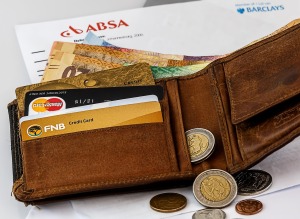
By Katharine Batchelor
On August 20, 2019, the North Carolina House passed its version of Senate Bill 315, the North Carolina Farm Act of 2019, sending it to the North Carolina Senate for a vote.[1] The bill, intended originally to expand the industrial hemp industry in North Carolina, revises the definition of “hemp product” to exclude smokable hemp, effectively banning smokable hemp.[2] That one revision is currently the source of great debate, with the state’s farmers and agriculture industry on one side and law enforcement on the other.[3] Before explaining the significance of this particular controversy, let me take two steps back and explain the root cause of the conflict.
A Quick Background on Hemp Legislation
In 2014, the 113th Congress passed a bill permitting state departments of agriculture to establish pilot programs for growing industrial hemp, if state law allowed.[4] In 2015, the N.C. General Assembly passed Senate Bill 313 which created the Industrial Hemp Commission to oversee the licensing and regulation of hemp farmers.[5] Since the creation of the Commission, industrial hemp production has boomed, with 634 licensed farmers currently growing on over 8000 acres and 3.4 million square feet of greenhouse space, at a time when the state’s farmers need the bump.[6] The declining demand for tobacco and trade issues with China have hurt North Carolina farmers, who currently produce half of all tobacco in the United States.[7] Hemp production has received another boost on a national-level when President Trump signed the 2018 Farm Bill into law, which reclassified hemp products from a controlled substance to an agricultural commodity.[8]
Is the THC less than 0.3%? Hemp v. Marijuana
Taking one more step back, it is important to understand the difference (and the similarities) between hemp and its closely-related cousin, marijuana. Hemp and marijuana are both part of the cannabis plant family, they are simply two different varieties.[9] There are a few types of hemp, one grown predominately for its seeds, another for its fiber, and another for its floral buds from which CBD is extracted.[10] The latter variety is the kind used for smokable hemp and thus where the problem lies. As the North Carolina State Bureau of Investigation (SBI) put it, “This type looks just like marijuana, including the leaves and buds, and it smells the same as marijuana. In fact, there is no way for an individual to tell the difference by looking at the plant; one would need a chemical analysis to tell the difference.”[11] Indeed, the only difference between hemp and marijuana is the amount of tetrahydrocannabinol, or THC, which is the psychoactive chemical in marijuana that produces a high when smoked.[12] Hemp products must contain 0.3% or less THC; anything greater and it is considered illegal.[13] While the N.C. Department of Agriculture utilizes private labs to test for the percentage of THC, the SBI crime lab currently only tests for the presence of THC and not the percentage of THC.[14] Why does that matter? Two words: probable cause.
The Impact of Hemp on Probable Cause
Under existing North Carolina case law, probable cause only requires law enforcement officers to reasonably believe that there is a “probability or substantial chance” of criminal activity.[15] To seize an item, an officer simply has to believe that it is evidence of a crime.[16] The existence of legal, smokable hemp thus creates a huge issue for the way marijuana is currently policed, investigated, and prosecuted.[17] In State v. Fletcher, the North Carolina Court of Appeals upheld a marijuana conviction based on an officer identifying marijuana visually using her experience and training.[18] Now, however, if an officer cannot distinguish on sight between hemp and marijuana, then that officer does not have probable cause to seize evidence or make an arrest, because the cannabis plant material an officer sees or smells could very well be smokable hemp – a legal commodity people are free to use whenever and wherever.[19]
Law enforcement agencies across the state have acknowledged the impact of smokable hemp on marijuana enforcement.[20] In fact, the SBI stated that at least one district attorney’s office has stopped prosecuting marijuana possession because officers can no longer distinguish hemp from marijuana; thus there is no evidentiary grounds for a conviction.[21] Many have even forecasted that the continued legality of smokable hemp could lead to the legalization of marijuana in North Carolina.[22] While there are tests to determine the amount of THC in a substance, there currently is no field test available to North Carolina law enforcement to use on site and again, the SBI currently only tests for the presence of THC.[23] The visual identification evidence by which so many marijuana cases are prosecuted is no longer available to law enforcement and prosecutors.
Senate Bill 315
In response to law enforcement’s concerns, a Senate subcommittee revised SB 315 to ban smokable hemp on June 6.[24] “Hemp product does not include smokable hemp.”[25] That version of the bill passed the Senate on June 18. Almost immediately, the state’s farmers spoke out in protest with the Industrial Hemp Commission calling on the N.C. General Assembly to keep smokable hemp legal.[26] The smokable hemp bud is more lucrative for farmers and many have already invested in new equipment and seed because the state has been loosening hemp laws since 2015.[27] That single revision, which would go in effect on May 1, 2020, could diminish farmers’ ability to obtain the necessary crop insurance and to compete with other states where smokable hemp is legal.[28]
Nevertheless, SB 315 made its way to the N.C. House where representatives went one step further in response to the impact of smokable hemp on probable cause. Before voting to pass the bill as a whole, the House passed the following amendment to the section titled, “Exclusion or suppression of unlawfully obtained evidence:”[29]
(a1) If evidence was obtained as the result of a search that was supported by probable cause at the time of the search, no evidence obtained as a result of that search shall be suppressed solely on the basis of either of the following:
(1) A subsequent determination that a substance believed to be a controlled substance at the time of the search was not a controlled substance.
(2) A subsequent determination that the presence of a controlled substance at the time of the search was not a violation of law.
In essence, the amendment returns probable cause based on visual identification to law enforcement and allows officers to search and arrest for suspected marijuana using sight and smell alone.[30] Furthermore, the amendment explicitly states that even if officers later determine a substance is a legal hemp product, any evidence found through a search can be used as evidence for other charges: the evidence is not fruit of the poisonous tree.[31] This amendment raises significant constitutional questions regarding legal search and seizure, which at least two Republican representatives highlighted before the House voted on the bill.[32] The bill was sent to the Senate Committee on Rules and Operations on August 22, which has to approve the current edition before it is sent to the governor.[33]
Whether the
current edition[34] of the
bill is signed into law remains to be seen. With two of the state’s most
influential groups, law enforcement and farmers, on opposing sides, it’s likely
that this debate isn’t over quite yet, and SB 315 could evolve once again
before it passes into the hands of Roy Cooper.
[1] Dawn Baumgartner Vaughan, NC House Votes for Ban on Smokable Hemp, Reacting to Police Concern Over Pot Arrests, Charlotte Observer (Aug. 21, 2019, 12:12 PM), https://www.charlotteobserver.com/news/politics-government/article234178387.html (quoting Fen Rascoe, a North Carolina Industrial Hemp Commission member and hemp farmer).
[2] S.B. 315 – 10th Ed., Gen. Assemb., 2019 Sess. (N.C. 2019), https://www.ncleg.gov/Sessions/2019/Bills/Senate/PDF/S315v10.pdf.
[3] Vaughan, supra note 1.
[4] Industrial Hemp Pilot Program in North Carolina, N. C. Dep’t of Agric. & Consumer Serv., https://www.ncagr.gov/hemp/index.htm (last visited Sept. 19, 2019).
[5] S.B. 313, Gen. Assemb., 2015 Sess. (N.C. 2015), https://www.ncleg.net/Sessions/2015/Bills/Senate/PDF/S313v5.pdf.
[6] Matthew Burns, NC Sees Hemp as Next Big Cash Crop, WRAL (Mar. 20, 2019), https://www.wral.com/nc-sees-hemp-as-next-big-cash-crop/18273125/.
[7] Heather Wilkerson, North Carolina Farmers Embrace Hemp as the Market for Tobacco Dwindles, Green Entrepreneur (June 11, 2019), https://www.greenentrepreneur.com/article/334739; Will Doran, NC Lawmakers See Hemp as the State’s Next Big Cash Crop. But Police are Opposed., Raleigh News & Observer (June 11, 2019, 8:19 PM), https://www.newsobserver.com/news/politics-government/article231439078.html.
[8] John Hudak, The Farm Bill, Hemp Legalization and the Status of CBD: An Explainer, Brookings (Dec. 14, 2018), https://www.brookings.edu/blog/fixgov/2018/12/14/the-farm-bill-hemp-and-cbd-explainer/.
[9] Industrial Hemp Pilot Program in North Carolina: Frequently Asked Questions, N. C. Dep’t of Agric. & Consumer Serv., https://www.ncagr.gov/hemp/FAQs.htm (last visited Sept. 19, 2019).
[10] Id.
[11] N.C. State Bureau of Investigation, Memo on Industrial Hemp/CBD Issues (May 2019), https://www.sog.unc.edu/sites/www.sog.unc.edu/files/doc_warehouse/NC%20SBI%20-%20Issues%20with%20Hemp%20and%20CBD%20Full.pdf.
[12] Id.
[13] Id.
[14] Id.
[15] State v. Riggs, 328 N.C. 213, 219 (1991).
[16] N.C. State Bureau of Investigation, supra note 11.
[17] Paul A. Specht, Some NC Lawmakers Want to Ban Smokable Hemp. It Looks Too Much Like Marijuana, They Say., Charlotte Observer (July 23, 2019, 7:36 PM), https://www.charlotteobserver.com/news/politics-government/article233012142.html.
[18] State v. Fletcher, 92 N.C. App. 50, 56 (N.C. Ct. App. 1988).
[19] Phil Dixon, Hemp or Marijuana?, U.N.C. Sch. of Gov’t: N.C. Crim. Law (May 21, 2019, 10:14 AM), https://nccriminallaw.sog.unc.edu/hemp-or-marijuana/.
[20] Specht, supra note 17.
[21] N.C. State Bureau of Investigation, supra note 11.
[22] Specht, supra note 17.
[23] N.C. State Bureau of Investigation, supra note 11.
[24] N.C. Senate Comm. on Agric./Env’t/Nat. Resources, PCS 15357 (2019) https://webservices.ncleg.net/ViewBillDocument/2019/4790/0/S315-PCS15357-TQf-5.
[25] Id.
[26] Specht, supra note 17.
[27] Id.
[28] Id.
[29] N.C. House, Amendment A1 to S.B. 315 (2019) https://webservices.ncleg.net/ViewBillDocument/2019/6292/0/S315-ASA-85-V-1.
[30] Vaughan, supra note 1.
[31] Id.
[32] Id.
[33] Id.
[34] S.B. 315 – 10th Ed., Gen. Assemb., 2019 Sess. (N.C. 2019), https://www.ncleg.gov/Sessions/2019/Bills/Senate/PDF/S315v10.pdf.

